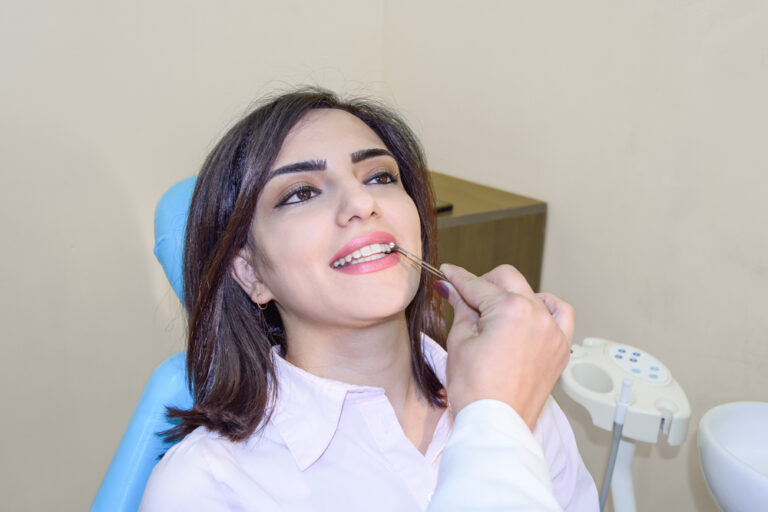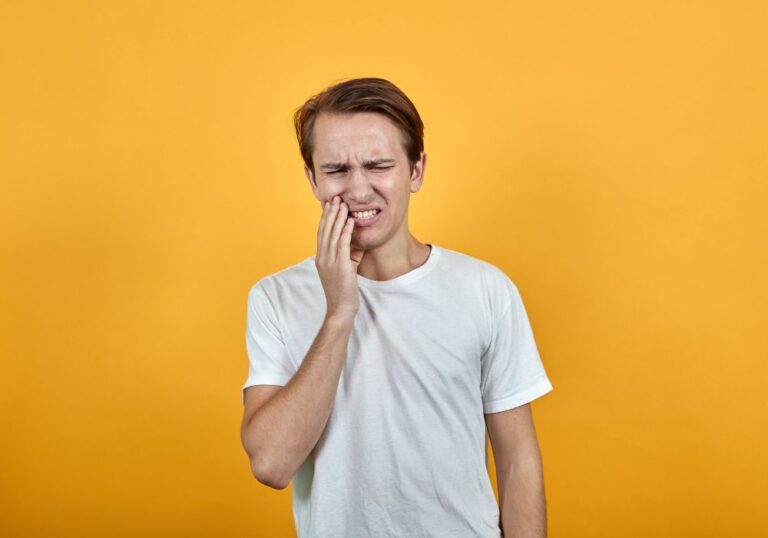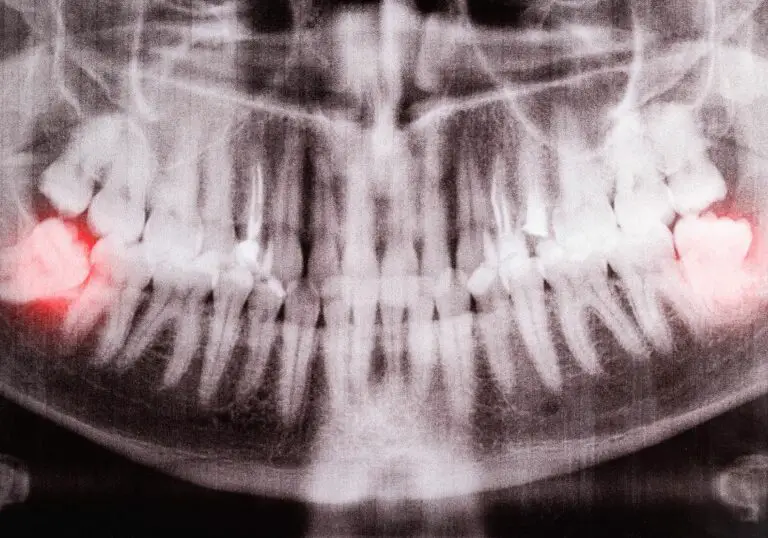Have you ever bitten down on something hard like an ice cube or hard candy and felt an uncomfortable pressure or even pain in your tooth? This sensation is caused by the forces that are applied to the tooth when you bite down. Understanding why teeth feel pressure and pain during biting can help explain how your teeth work and why dental problems like cavities, cracked teeth, and root infections develop.
Tooth Anatomy

Human teeth are complex structures composed of multiple layers of mineralized tissues. Each tissue layer plays an important role. Here are the key anatomical components of a tooth:
Enamel
- The outermost layer of the tooth made of the hardest substance in the body. Enamel is >95% mineral, with very little water or organic material.
- It ranges from 2-3 mm thick and covers the visible crown portion of the tooth.
- Enamel helps protect the inner tooth layers from bacterial acids and physical wear. It distributes bite forces across the underlying dentin.
Dentin
- The layer immediately under the enamel that forms the bulk of the tooth structure.
- Dentin contains 70% minerals like hydroxyapatite crystals reinforced with an organic collagen matrix. This gives dentin more flexibility than enamel.
- It has tiny fluid-filled tubular structures leading towards the pulp that allow for sensory transmission.
Pulp
- The innermost chamber filled with soft connective tissues, blood vessels, nerves, and lymphatic vessels.
- The pulp provides nourishment to keep the tooth alive and sensory innervation.
- It extends like a funnel down through the tooth roots. The openings at the root ends are called apical foramina.
Cementum
- This bone-like calcified substance covers the dentin of the tooth roots.
- It is softer than enamel and dentin but helps anchor the periodontal ligament fibers.
- Cementum is produced continually to compensate for wear, keeping the attachment strong.
Periodontal ligament
- The periodontal ligament is a dense fibrous connective tissue that essentially suspends the tooth in the jawbone socket and attaches via cementum.
- This ligament has an excellent blood supply and contains mechanoreceptor nerve endings that provide sensory feedback.
- It allows the tooth to withstand chewing forces and provides proprioceptive information about tooth positioning.
Why Do Teeth Feel Pressure When Bitten?
When you bite down, the force is transmitted through the enamel and dentin layers towards the pulp chamber. The pressure then compresses the soft pulp tissue, including the nerve fibers inside. This compression causes the nerve endings to fire and send signals indicating tooth pressure up to the brain via the trigeminal nerve.
The fluid in the dentin tubules also shifts, which bends and stimulates the nerve fibers near the pulp border to generate pressure sensations. Even slight stresses on the teeth may induce fluid flows inside the dentin that are perceived by the nerves.
The exact mechanisms that cause teeth to feel pressure include:
Force transmission
- Enamel and dentin distribute and transfer bite force inwards towards the pulp chamber. This effectively squeezes the pulp.
Nerve compression
- The pulp contains bundles of sensory nerves that are compressed by inward pressure on the tooth. This deformation of nerve fibers triggers electrochemical signals.
Fluid shifts
- Pressure generates fluid shifts and flows inside dentin tubules and the pulp that stimulate nerve fibers.
Tooth deformation
- Stress and strain deform the hard tooth structure slightly, activating nerve endings.
Periodontal sensation
- Fibers of the periodontal ligament are also compressed and stimulated, contributing to pressure signals.
Odontoblast stimulation
- The cells that line the pulp chamber (odontoblasts) may release signaling molecules in response to deformation, heightening nerve sensitivity.
Factors Affecting Pressure Sensation

Several factors can influence the intensity and location of the pressure feeling when biting down on a tooth:
Bite force
- Harder bites exert more force and pressure on the teeth. More force equals more nerve stimulation.
Tooth health
- Structural defects like cracks, caries, and large restorations reduce the enamel integrity. This results in less even force distribution and higher pressures on the pulp.
Restorations
- Dental work like metal or ceramic fillings, inlays, onlays, crowns, bridges, and implants all transmit biting forces differently than natural tooth structure. More force may be placed on particular areas of the tooth, heightening sensitivity.
Occlusion patterns
- The way the upper and lower teeth contact (occlude) affects how forces are distributed across and between teeth. Irregular contacts concentrate more pressure in certain areas.
Tooth type
- The size, shape, and nerve density of different teeth affects pressure sensation. Incisors often feel more sensation than molars when loaded.
Age
- As the pulp chamber naturally shrinks and dentin thickens with age, there may be progressively less sensation of pressure from biting.
Individual factors
- People have varying levels of sensation in their teeth based on the neurologic structure. Some are just more sensitive.
Why is Pressure Sensation Important?
The ability to sense pressure and forces applied to our teeth is extremely important for several reasons:
Biting and chewing adjustment
- Pressure provides feedback to the brain, allowing you to subconsciously adjust bite force and chewing to prevent damage to teeth. You bite hard enough to chew effectively but not so hard as to fracture teeth.
Tactile information
- Along with touch receptors in the tongue, lips and cheeks, tooth pressure contributes to the detailed sensory information about food objects in the mouth. This guides positioning for effective chewing.
Dental disease detection
- Unusual pressure sensations can provide an early warning of underlying dental problems like cracks, leaking fillings, or pulp inflammation. Catching issues early prevents more extensive damage.
Tooth vitality sensing
- Monitoring nerve vitality through electric pulp testing relies on the teeth sensing pressure and transmitting those signals. A lack of sensation indicates the tooth pulp may be necrotic or compromised.
Protective neural reflexes
- Extreme pressure sensed by the pulp nerves triggers reflexes to rapidly open the jaws and avoid fracture or periodontal injury.
Tooth eruption and development
- Forces sensed by the periodontal ligaments help guide the emergence of teeth into proper alignment. Proper occlusion depends on this feedback.
What Happens if Tooth Pressure Detection is Lost?
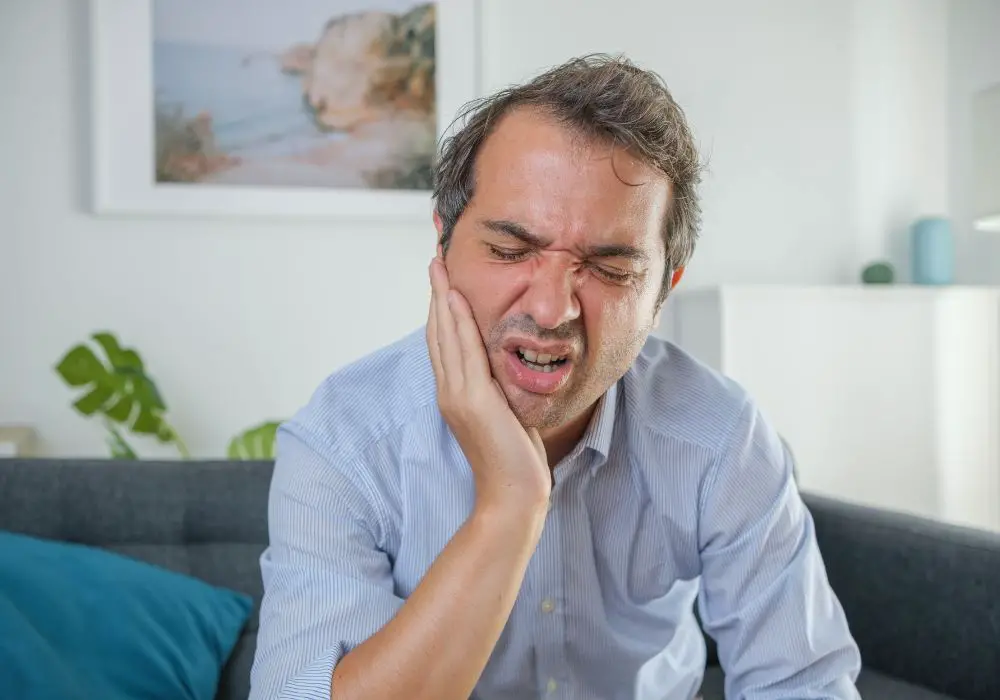
If the sensory nerves inside a tooth become severely damaged or die off due to trauma, decay, or infection, that tooth loses innervation. This is referred to as a “dead” tooth. Lacking pain and pressure sensation has several consequences:
Unconsciously forceful biting
- Without discomfort to signal excessive forces, people bite abnormally hard on these numb teeth, risking damage.
Impaired chewing
- Tactile feedback is reduced, decreasing chewing precision on the effected side. Food is often left uneaten on the numb area.
Undetected tooth breakdown
- Cracks, chipping, root fractures, and leaking fillings go unnoticed since pain and pressure signals are absent. This allows preventable damage to worsen.
Pulp infection risk
- Pulpal necrosis and abscesses are more likely to occur starting from untreated caries. Infection spreads with no discomfort.
Tooth loss
- Once the pulp dies due to lack of blood flow, the tooth is no longer viable and often must be extracted or undergo root canal therapy.
Jaw joint issues
- Imbalanced biting forces lead to TMJ strain and damage over time due to the loss of proprioceptive feedback from the numb tooth.
Damage to other teeth
- Without pressure sensitivity on one tooth, more strain is placed on adjacent teeth, increasing the chance of cracks and fracture.
Restoring Pressure Sensation
If a tooth has become non-vital but the surrounding tooth structure remains intact, dentists will often try to perform treatments to revive or restore some degree of sensory function:
Root canal therapy
- This treatment cleans out infection from the root canals and pulp chamber. It is then sealed and filled to encourage regrowth of nerve tissue, reconnecting the tooth’s innervation.
Dentin regeneration procedures
- Experimental treatments aim to regrow living, innervated dentin-like tissue inside cleaned pulp chambers using stem cells. This could restore sensation.
Bioactive restorative materials
- New glass ionomer cements and resin-based composites release compounds that stimulate dentin tubule growth and conductivity, allowing some pressure transmission.
Dental implants
- After failed teeth are extracted, titanium implants fuse with the jawbone. Their stability allows pressure and force transmission from biting to be felt as with natural teeth.
Tooth splinting
- Splints are bonded across compromised teeth to redistribute biting forces more evenly and prevent damage of the non-vital tooth during function.
While complete normal sensation is difficult to recreate, these treatments can at least help prevent excessive biting damage and give some sensation where teeth were formerly numb.
Sensitivity Causes
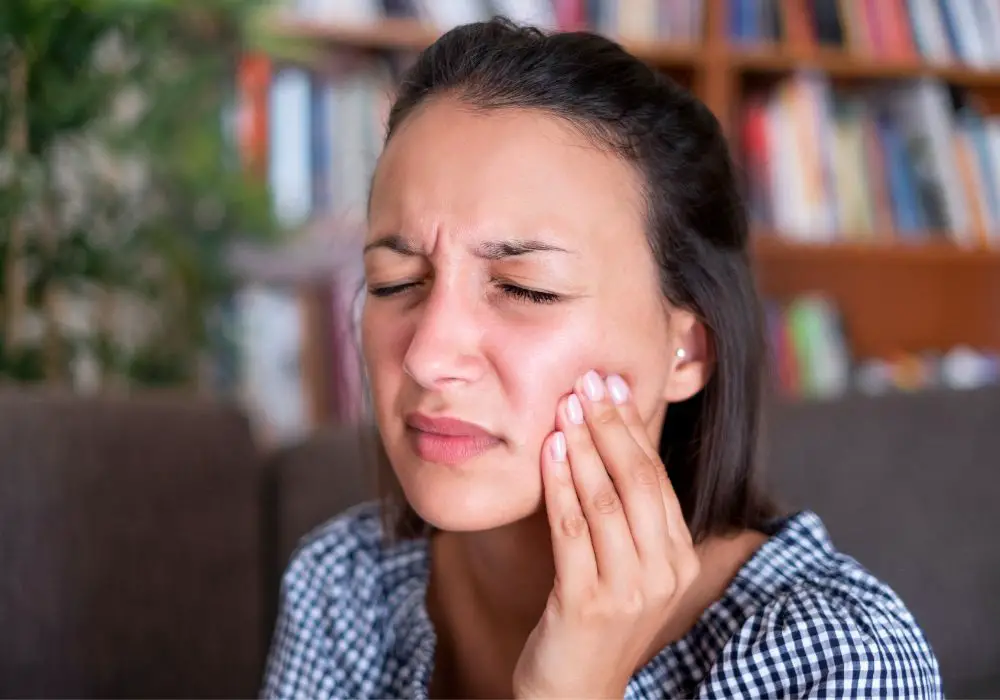
In other cases, teeth may become overly sensitive to pressure rather than losing sensation. This localized pain when biting down is termed dentin hypersensitivity. Some common causes include:
Dentin exposure
- Gum recession or acidic erosion that removes the enamel exposes the softer dentin surface. Dentin has much greater sensitivity due to the fluid-filled tubules.
Gingival recession
- As gums recede, less insulation covers the root surfaces making the cementum more exposed. Root surfaces have high dentin sensitivity.
Cracks
- Enamel cracks act like antennas, amplifying pressure straight down to the pulp. Cracked teeth are thus extremely sensitive.
Bruxism
- Habitual tooth grinding or nighttime clenching places severe pressure on teeth, making them sore. Worn teeth become sensitive over time.
Abrasion/Erosion
- Wear from abrasive foods, improper brushing, and acid erosion thin the enamel layer that protects the sensitive dentin underneath.
Tooth flexure
- Force induces inward flexing of the crown which strains the pulp tissue, sensitizing the nerves.
Managing Tooth Sensitivity
If your teeth are overly sensitive to pressure or exhibit pain when biting down, here are some tips to reduce discomfort:
- Use a soft-bristled toothbrush and gentle brushing motion focused on the gumline to avoid dentin abrasion. Avoid stiff-bristled brushes.
- Monitor dietary acid intake. Avoid frequent consumption of highly acidic or erosive foods and beverages. Limit citrus, carbonated drinks, and vinegar.
- Have dentin bonding agents or desensitizing agents applied to exposed root surfaces to seal open tubules. This prevents fluid shifts.
- Use toothpastes containing active ingredients like strontium chloride, potassium nitrate or stannous fluoride to reduce nerve sensitivity.
- Maintain meticulous oral hygiene to prevent gum recession and the subsequent dentin exposure this causes.
- Have your dentist repair any cracked, chipped, or worn teeth. Dental work can protect sensitive areas.
- Wear a custom nightguard if you clench or grind your teeth to prevent pressure damage.
- Get professional fluoride treatments to strengthen enamel and reduce sensitivity.
- As a last resort, endodontic treatment or crown coverage may be required on severely sensitive teeth.
When to Seek Help
While minor temperature or pressure sensitivity is common and not concerning, you should consult your dentist promptly if you experience:
- Persistent sensitivity lasting more than 2-3 weeks
- Pain that disrupts sleep or eating
- Sensitivity with no apparent cause like cracks, erosion, or gingival recession
- Sudden sharp sensitivity while drinking hot or cold fluids
- Loosening teeth or changes in occlusion
- Swelling of gums indicating potential infection
- Any mouth pain that cannot be explained
Getting evaluated quickly allows early intervention before major pulp or root damage occurs. Not all sensitivity requires immediate treatment, but a dentist can monitor it for changes over time.
Conclusion
- The sensation of pressure when biting arises from the innervation and force transmission properties of the tooth structure interacting with the oral environment.
- This sensitivity is important for controlling bite forces, detecting dental issues early, and preserving tooth vitality.
- Loss of pressure sensation can have serious consequences like excessive biting, unchecked infections, and unnecessary tooth loss.
- Restorations aim to prevent damage in numb teeth or regenerate some sensory function.
- In other cases, sensitivity results from exposed dentin rather than actual pulpal damage. Dietary acids, gum disease, and bruxism often contribute to this type of sensitivity.
- Managing factors like brushing habits, enamel wear, and occlusal strains can help reduce discomfort from pressure sensitivity.
- Severe or persistent sensitivity should be promptly evaluated by a dentist to check for underlying disease.
The intricacies of tooth anatomy and neurology determine the sensations perceived during biting and chewing. With proper home care and professional dental treatment, your natural pressure detectors can remain sensitive yet resistant to damage for decades to come.
Frequently Asked Questions
Why do I feel pain in one area of my tooth when biting down?
You may feel localized pain or sensitivity when biting down due to a problem in a specific part of the tooth, such as:
- A cavity or crack concentrating force on the pulp in that spot
- Prior dental work like a filling or crown that is slightly high, putting more pressure on one area
- Infection from decay or trauma that has inflamed the nerve only around the tip of the root
- Occlusal trauma causing a small fracture within the dentin invisible on an x-ray
- Early stages of crack formation transmitting force just to the neurovascular bundle directly under the crack line
Careful examination and bite testing are required to pinpoint the cause of discomfort to a small area. Dentists can identify potential issues with tools like transillumination, magnification loupes, and fiber optic transillumination.
Is it normal for front teeth to be more sensitive than back teeth?
Yes, the front incisors and canines normally exhibit greater sensitivity since they have thinner enamel coverings and only a single root versus the multiple roots of posterior molars. The pulp chamber in anterior teeth is also in closer proximity to the biting surface due to shorter crown length.
Furthermore, the front four incisors generally have only a single neurovascular bundle entering the root. More nerve fibers concentrated in a smaller area translates to increased sensory perception. The incisors are also used for tearing food, so pressure sensitivity provides important feedback for controlling forces during these actions.
Why do my teeth hurt when I bite down after drinking something cold?
Thermal shock from cold drinks causes fluid shifts and contraction of the pulp tissue which then becomes inflamed and compressed when biting down. The combination of cold stimulation and biting pressure causes exaggerated fluid movement inside the dentin tubules, exciting the nerve fibers more extensively.
Cold also increases the excitability and conduction velocity of the sensory nerves, so they fire more intensely when simultaneously compressed by biting, resulting in sharp pain. The pain dissipates once the pulp warms and fluid shifts normalize.
If a tooth doesn’t hurt to cold but does to biting, what does that mean?
Sensitivity solely to biting pressure rather than temperature change is often indicative of problems in the outer enamel or dentin layers rather than the pulp.
Potential causes include cracks, defective dental restorations, bruxism wearing the enamel, or occlusal trauma fracturing the dentin. The deeper pulp may not yet be inflamed or disturbed, so temperature sensitivity is absent. However, structural defects transmit biting forces more intensely to the healthy pulp, causing discomfort.
What should I do if I feel constant pressure in one tooth that won’t go away?
Persistent discomfort to pressure in a localized area likely indicates an underlying infection, inflammation, or structural defect. Possibilities include:
- Deep decay reaching the pulp that has become infected
- Abscess from necrosis of the pulp
- Vertical root fracture
- Split tooth from extensive cracking
- Compromised filling allowing fluid sensitivity
- Hypertensive periodontal ligament compressing the tooth
You should promptly seek dental evaluation and treatment in such cases, since pulpal infections will continue to worsen without intervention, risking tooth loss or spread of bacteria. Getting an x-ray and testing pulp vitality are first steps in diagnosis.

